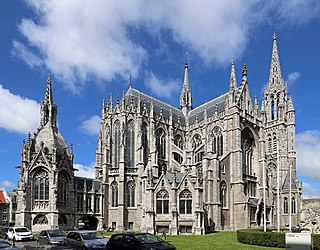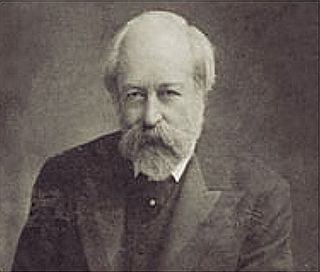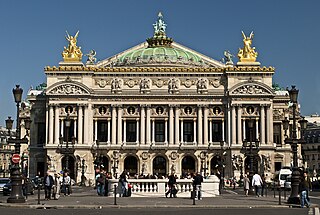
Louis-Pierre Baltard was a French architect, and engraver and father of Victor Baltard.

Gothic Revival is an architectural movement that after a gradual build-up beginning in the second half of the 17th century became a widespread movement in the first half of the 19th century, mostly in England. Increasingly serious and learned admirers sought to revive medieval Gothic architecture, intending to complement or even supersede the neoclassical styles prevalent at the time. Gothic Revival draws upon features of medieval examples, including decorative patterns, finials, lancet windows, and hood moulds. By the middle of the 19th century, Gothic Revival had become the preeminent architectural style in the Western world, only to begin to fall out of fashion in the 1880s and early 1890s.
This is a timeline of architecture, indexing the individual year in architecture pages. Notable events in architecture and related disciplines including structural engineering, landscape architecture, and city planning. One significant architectural achievement is listed for each year.
The year 1898 in architecture involved some significant architectural events and new buildings.
The year 1868 in architecture involved some significant events.
The year 1900 in architecture involved some significant events.
The year 1869 in architecture involved some significant architectural events and new buildings.
The year 1870 in architecture involved some significant architectural events and new buildings.
The year 1887 in architecture involved some significant architectural events and new buildings.
The year 1764 in architecture involved some significant events.
The year 1899 in architecture involved some significant events.
The year 1871 in architecture involved some significant events.
The year 1864 in architecture involved some significant architectural events and new buildings.

George Frederick Bodley was an English Gothic Revival architect. He was a pupil of Sir George Gilbert Scott, and worked in partnership with Thomas Garner for much of his career. He was one of the founders of Watts & Co.

Victor Baltard was a French architect famed for work in Paris including designing Les Halles market and the Saint-Augustin church.
The year 1872 in architecture involved some significant architectural events and new buildings.
Thomas Garner was one of the leading English Gothic revival architects of the Victorian era. He is known for his almost 30-year partnership with architect George Frederick Bodley.

Paul Sédille was a French architect and theorist; and designed the 1880 reconstruction of the iconic Magasins du Printemps department store in Paris.

Second Empire style, also known as the Napoleon III style, is a highly eclectic style of architecture and decorative arts, which uses elements of many different historical styles, and also made innovative use of modern materials, such as iron frameworks and glass skylights. It flourished in the Second French Empire during the reign of Emperor Napoleon III (1852–1870) and had an important influence on architecture and decoration in the rest of Europe and North America. Major examples of the style include the Opéra Garnier (1862–1871) in Paris by Charles Garnier, the Bibliothèque nationale de France, the Church of Saint Augustine (1860–1871), and the Philadelphia City Hall (1871–1901). The architectural style was closely connected with Haussmann's renovation of Paris carried out during the Second Empire; the new buildings, such as the Opéra, were intended as the focal points of the new boulevards.
The Architect of the City of Paris is the incumbent of a municipal position, responsible for the design and construction of civic projects in Paris.







